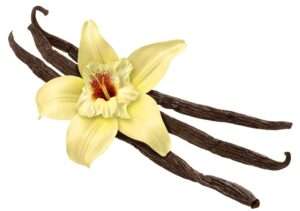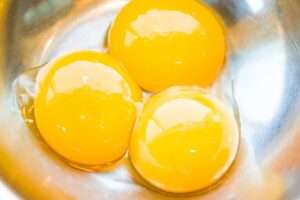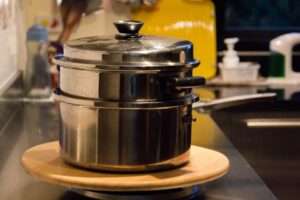What is Custard?
Custard is a delightful dessert that has been enjoyed for centuries around the world. This creamy and luscious treat is made with a combination of milk or cream, sugar, and egg yolks. Its versatility allows it to be enjoyed on its own, as a filling for pastries and tarts, or as a topping for fruits and desserts. While there are variations in recipes and flavors, the classic custard typically has a smooth texture and a rich, indulgent flavor. Whether it’s served warm or chilled, custard is a beloved dessert for all ages.
Benefits of Making Homemade Custard
Making homemade custard offers numerous benefits that make it a delightful and wholesome dessert option. Unlike store-bought custard, homemade custard is rich and creamy, offering a luxurious texture that’s hard to beat. By using fresh and wholesome ingredients such as milk, eggs, and sugar, it not only provides a decadent treat but also ensures that you know exactly what’s going into your dessert.
One of the best things about making custard from scratch is the ability to customize it to your taste. Whether you prefer a classic vanilla flavor, or want to experiment with adding in different extracts or spices, homemade custard allows for endless flavor possibilities. Additionally, you can top it with fresh fruit, nuts, or a drizzle of caramel to elevate the taste even more.
From a health perspective, homemade custard can be a better option than store-bought versions as it does not contain preservatives or artificial additives. This means you can indulge in a delicious dessert without worrying about consuming unnecessary chemicals or unhealthy ingredients.
In conclusion, making homemade custard provides a rich and creamy dessert experience, using fresh and wholesome ingredients while also allowing for customization. It’s a healthier option compared to store-bought versions, as it is preservative-free.
Preparing the Ingredients
When it comes to cooking, proper preparation is key to a successful dish. Preparing the ingredients is an important step in any recipe as it ensures that everything is ready to go once the cooking process begins. From washing and cutting vegetables to marinating meat, taking the time to prepare your ingredients beforehand can make the cooking process much smoother and more enjoyable. Whether you’re following a complex recipe or simply throwing together a quick meal, having your ingredients prepped and ready to go will make the entire cooking experience more efficient and stress-free. In this section, we will explore the various ways to properly prepare your ingredients to set yourself up for cooking success.
Ingredient List
To make a delicious custard, you will need the following ingredients: a vanilla bean, heavy cream, whole or reduced-fat milk, egg yolks, and white sugar. The vanilla bean will infuse the custard with a rich, aromatic flavor, while the heavy cream will give it a luxuriously creamy texture. Using whole or reduced-fat milk will ensure that the custard has the right amount of richness without being too heavy. When it comes to sweetening the custard, it’s best to use caster or superfine sugar for a smooth and silky consistency.
If you’re feeling adventurous, you can also experiment with different flavorings in your custard. While vanilla extract is a classic choice, you can try using rum, maple, coconut, lemon, or banana extracts to create a unique flavor profile that suits your taste preferences.
In conclusion, to make a custard, gather the following ingredients: a vanilla bean, heavy cream, whole or reduced-fat milk, egg yolks, and white sugar. These simple ingredients will come together to create a delectable dessert that is sure to please the palate.
Preparing the Vanilla
To prepare the vanilla, start by splitting the bean lengthwise with a sharp knife. Once split, use the back of the knife to scrape out the tiny black seeds from inside the bean. These scraped seeds can be added to the custard mixture to infuse it with a more intense vanilla flavor.
Next, add the split vanilla bean to the milk and cream mixture in a saucepan. Bring the mixture to a gentle simmer over low heat, making sure not to let it boil. Let it simmer for a few minutes, allowing the vanilla bean to infuse the liquid with its flavor. Then, remove the vanilla bean from the mixture and discard it.
By following these steps, you can effectively prepare the vanilla bean for use in custards, creams, and other culinary delights. The split bean and scraped seeds add a rich, aromatic vanilla flavor to your dishes, making them more delicious and delightful.

Preparing the Milk Mixture
To prepare the milk mixture for the custard, start by pouring raw milk into a saucepan and placing it on the stove over medium heat. Allow the milk to heat gradually, stirring occasionally, until it reaches a simmer.
While the milk is heating, take a separate bowl and whisk together the egg yolks, sugar, and vanilla extract until well combined. Make sure the mixture is smooth and the sugar is fully dissolved.
Once the milk reaches a simmer, carefully and gradually pour it into the bowl with the egg yolk mixture, whisking constantly as you pour. This gradual process helps to temper the egg yolks, preventing them from curdling when mixed with the hot milk. Continue whisking until the milk and egg mixture are fully combined, then transfer the mixture back into the saucepan.
Place the saucepan back on the stove and cook the mixture over low heat, stirring constantly, until it thickens enough to coat the back of a spoon. This milk mixture is now ready to be used as the base for the custard, and can be poured into the desired molds or dishes for further chilling and setting.
Measuring the Egg Yolks
To accurately measure egg yolks, start by carefully separating the yolks from the whites. This can be done by cracking the egg in half and transferring the yolk back and forth between the two halves, allowing the whites to fall into a separate bowl. Alternatively, use a specialized egg yolk separator for a more precise separation.
Once the yolks are separated, place them on a clean, dry kitchen scale. Set the scale to zero to ensure accurate measurements. Gently place the egg yolks on the scale and record the weight. If using a recipe that requires a specific number of egg yolks rather than a weight measurement, this can be done by carefully counting out the yolks after they have been separated.
Using a kitchen scale or egg yolk separator ensures that the correct amount of egg yolks is used in a recipe, which can be crucial for achieving the desired texture and consistency. By following these steps, you can ensure that your measurements are accurate and your dishes turn out just right.

Optional Sweeteners
There are several optional sweeteners commonly used in the food industry, each with its own unique characteristics.
Stevia is a natural sweetener derived from the leaves of the Stevia rebaudiana plant. It is much sweeter than sugar but has zero calories and is popular for its low glycemic index.
Agave nectar is a natural sweetener derived from the agave plant. It is sweeter than sugar and has a low glycemic index, making it a popular choice for those looking to manage their blood sugar levels.
Erythritol is a sugar alcohol that is found naturally in some fruits and fermented foods. It has a similar taste to sugar but with fewer calories and no effect on blood sugar levels.
Monk fruit extract is a natural sweetener derived from the monk fruit. It is incredibly sweet with zero calories and is known for its low glycemic index.
Coconut sugar is derived from the sap of the coconut palm. It has a similar taste to brown sugar and contains some nutrients, although it is still high in calories and should be used in moderation.
Each of these sweeteners offers a unique taste and nutritional profile, allowing consumers to make more informed choices about their sweetener preferences.
Cooking the Custard
Custard is a classic dessert that requires precision and patience to achieve the perfect creamy texture and rich flavor. Whether you’re making it from scratch on the stovetop or baking it in the oven, there are key techniques and tips to keep in mind to ensure a successful custard. From choosing the right ingredients to mastering the cooking process, here are some helpful guidelines to elevate your custard-making skills and impress your friends and family with a decadent dessert.
Setting up a Double Boiler
To set up a double boiler, start by filling a saucepan with an inch or two of water. Place the saucepan on the stovetop over medium heat. Once the water begins to simmer, reduce the heat to low.
Next, select a heatproof bowl that can fit snugly on top of the saucepan without touching the water. This will be where the chocolate or delicate sauce will be melted or heated. Place the heatproof bowl on top of the saucepan, ensuring that it sits securely without any wobbling.
Now, add the chocolate or delicate sauce to the heatproof bowl. As the water in the saucepan simmers, the gentle and indirect heat will melt the chocolate or heat the sauce evenly without the risk of scorching or burning.
The double boiler method is ideal for melting chocolate or heating delicate sauces because it provides a gentle heat that is less likely to cause overheating, which can lead to a grainy texture or separation.
Using a double boiler is a simple and effective way to ensure that your chocolate or delicate sauces are heated or melted to the perfect consistency without the risk of burning or overcooking.

Heating the Milk Mixture in the Double Boiler
To heat the milk mixture in a double boiler, start by filling the bottom pot of the double boiler with water and placing it on the stovetop over medium heat. Then, place the top pot on top of the bottom pot, making sure it sits securely.
Pour the milk mixture into the top pot of the double boiler and use a kitchen thermometer to monitor the temperature. Continuously stir the mixture to ensure even heating and to prevent it from scorching on the bottom of the pot. It is important to heat the milk mixture to a temperature of 180°F, as this will pasteurize the milk and create a smoother texture for the final product.
Once the milk mixture reaches 180°F, remove it from the heat and continue to stir for a few more minutes to evenly distribute the heat. At this point, the milk mixture is ready to be used in your recipe.
Heating the milk mixture in a double boiler is a gentle and effective way to pasteurize the milk while creating a smooth and creamy texture for your final product. Remember to monitor the temperature and continuously stir the mixture to achieve the best results.
Mixing in the Egg Yolk Mixture to the Milk Mixture on Medium-Low Heat
First, begin by preparing the egg yolk mixture by whisking the yolks until they are well-combined. In a separate saucepan, warm the milk mixture over medium-low heat until it is heated through but not boiling.
Next, slowly pour the egg yolk mixture into the milk mixture, ensuring that you pour it in a steady and controlled manner. As you are pouring, simultaneously whisk the mixture at a low speed to evenly incorporate the egg yolk into the milk. It is important to whisk at a low speed to prevent frothing and foaming from occurring.
Continue to whisk the mixture gently as the egg yolk is incorporated into the milk mixture. Be sure to monitor the heat and adjust it as necessary to maintain a medium-low heat throughout the process. It is crucial to avoid frothing and foaming, as this can result in an uneven texture and unwanted air bubbles in the mixture.
Once the egg yolk mixture is fully mixed into the milk mixture, continue to heat the combined mixture over medium-low heat until it reaches the desired temperature for your recipe. With careful attention to pouring slowly, whisking at a low speed, and avoiding frothing and foaming, you can successfully combine the egg yolk mixture with the milk mixture on medium-low heat.
Stirring Constantly for Creamy Consistency on Medium Heat
To achieve a creamy consistency while making custard, it is important to stir the mixture constantly over medium heat. This will prevent the formation of any lumps and ensure a smooth texture in the finished custard. By keeping the heat at a moderate level, you can also avoid scrambling the eggs in the mixture.
As you heat the custard over medium heat, be sure to stir the mixture continuously to prevent it from sticking to the bottom of the pan and to evenly distribute the heat throughout. This constant stirring will help the custard thicken and reach the desired creamy consistency without any lumps forming.
It is recommended to continue stirring for about 3-5 minutes until the custard has thickened to the desired texture. This thorough and constant stirring is essential for achieving a smooth and creamy custard that is free from any lumps or uneven texture.
By following these instructions and paying close attention to stirring constantly over medium heat, you can successfully create a delicious and creamy custard with the perfect texture.
Adding Vanilla Extract & Optional Sweeteners to Taste (Optional)
To enhance the vanilla custard, start by adding a small amount of high-quality vanilla extract. Choose a robust extract to achieve a full and natural vanilla flavor. For an even richer taste, consider using vanilla pods or vanilla bean paste, which can elevate the custard to a new level of decadence.
If you prefer your custard to be sweeter, consider adding sweeteners to taste. This step is completely optional and can be adjusted based on personal preference. Common sweeteners to consider include sugar, honey, agave nectar, or maple syrup. Add these sweeteners gradually, tasting as you go, until the custard reaches your desired level of sweetness.
Remember, the key to enhancing the vanilla custard lies in using high-quality extract for a robust vanilla flavor. The addition of vanilla pods or vanilla bean paste can take the custard to the next level, providing a rich and indulgent taste. And should you choose to sweeten the custard, do so to your liking with the sweetener of your choice, adjusting the amount until it perfectly complements the vanilla flavor.
Finishing Touches & Storage Tips (Optional)
After preparing homemade custard, adding the finishing touches can take it to the next level. Some great options include topping the custard with fresh fruit such as berries or sliced bananas, or a dollop of freshly whipped cream. A sprinkle of cinnamon or a drizzle of caramel sauce can also enhance the flavor and presentation of the custard. These finishing touches not only add visual appeal but also provide a burst of complementary flavors.
For long-term storage, any leftover custard can be stored in an airtight container to maintain its freshness. Alternatively, custard can also be frozen for up to 1 month. To freeze the custard, allow it to cool completely before transferring it to a freezer-safe container. When ready to enjoy, simply thaw the custard in the refrigerator overnight and stir well before serving to restore its creamy texture.
By adding these finishing touches and utilizing these long-term storage tips, you can ensure that your homemade custard remains delicious and fresh for a longer period of time.
Recommend0 recommendationsPublished in Recipes
Responses